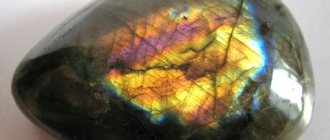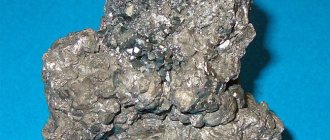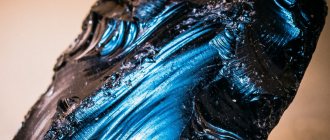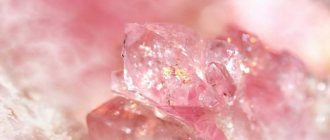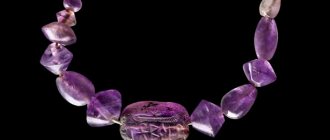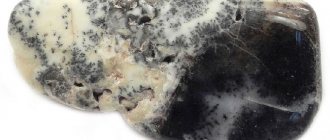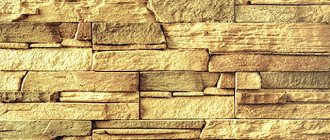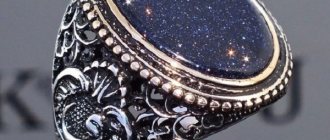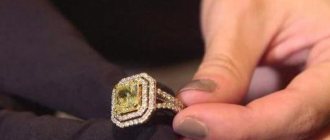Selenite is a type of gypsum. The very one whose significance for humans has been known for a long time. It is used in medicine and in the chemical industry. In the construction business you cannot do without it.
But there are varieties of simple gypsum, whose beauty people have long used to decorate their lives. Selenite and alabaster were used in different religions - the first has an iridescent sheen, the second looks like marble, translucent at the edges. Both varieties were used to make religious objects, containers for storing medicines and cosmetics. It is difficult to describe the beauty of minerals, just as it is difficult to describe the beauty of moonlight to the blind.
Story. Origin
Until the beginning of the 19th century, this mineral was known under the names:
- oriental alabaster;
- Egyptian stone;
- Ural stone.
In 1817, the chemist Berzelius named it selenite in honor of the Greek moon goddess Selene.
Selenite, with its unusual radiance and iridescent brilliance, resembles a moonstone (adularia), but calling it that is inappropriate, since this is the gemological name for adularia.
The amazing property of the mineral to glow from within was the reason that in ancient times this feature was perceived as magic and this stone was used in magical rituals. Archaeologists have found many ritual attributes made from selenite.
They made dishes, figurines, and decorations from it. In the Middle Ages, it began to be used to make church utensils, and selenite figurines decorated the houses of the nobility.
In the 19th century, selenite became popular in Russia. Its snow-white samples were found in the Perm province and used in the decoration of the Winter Palace. Ural craftsmen began to make jewelry and figurines from it. Such products decorated many homes. Selenite elephants were especially popular; they were believed to bring happiness to the home.
The origin of this translucent mineral is associated with the fossilization of sedimentary materials. It is formed in sand and clay rocks in the form of veins and fibers.
Mining locations
Selenite is mined everywhere - its deposits are distributed throughout the world. It is found in sedimentary rock layers, mainly clay. Selenite veinlets are mined using an industrial open-pit method: the top layers of clay are removed, then the viscous layers of limestone or shale are removed, opening access to the selenite. In Russia, the main deposits of the mineral are the slopes of the banks of the Iren River near the city of Kungur, the villages of Krasny Yasyl (Ural Stone Cutting LLC near Kungur), Vtorye Klyuchiki, Opachevka-Kungurskaya and Pavlovka.
The largest global suppliers are considered to be the USA, Canada, Egypt, Australia, and active production from European countries is in France and Germany. But the largest crystals were discovered in Mexico in the Cave of Crystals.
Physicochemical characteristics
Selenite is a morphological variety of gypsum. The structure of its units is parallel-fibrous. Thanks to this, a beautiful optical iridescence effect appears on the polished surface of selenite. If the pebble is turned from side to side, a moving stripe of color will be visible (cat's eye effect).
The color of pure varieties is white, but more often the stone has pastel shades (pink, yellow, beige, blue).
From a chemist's point of view, it is aqueous calcium sulfate.
- Chemical formula - CaSO42H2O .
- Color - white, gray, sometimes green, orange.
- The shine is silky, pearlescent.
- Transparency - transparent and translucent.
- Hardness - 1,5–2.
- Density - 2.31–2.33 g / cm3 .
This beautiful soft mineral can be easily polished, which is why it is a popular ornamental stone.
The term "selenite" is used in English-language sources to designate all transparent aggregates and crystals of gypsum, as opposed to the opaque massive varieties of the mineral.
Types of selenite and how to distinguish a fake
Most often, selenite is a white mineral, sometimes with a grayish tint, shiny and translucent. It looks like a pearl or a lollipop. Some specimens are completely devoid of color. There are also various other shades, depending on the chemical impurities in the composition of the gem:
- pink;
- beige;
- blue;
- yellow.
Some subspecies of the mineral are quite rare. For example, this is labradorite, a black variety of selenite, which is mined in Canada. Brown specimens are sometimes found in Russian deposits. Copper-yellow and golden stones are beautiful and extremely rare. All crystals have an iridescent effect. Along with the viewing angle, the light strip also shifts.
Copper-yellow and golden selenite stones are not common.
Now a little about how to distinguish a fake. Eastern alabaster is inexpensive and is found everywhere in nature, so the price of selenite products is not too high. There would seem to be no need to imitate a crystal. But fakes still come across on sale.
There are ways to obtain artificial stone using a glass mass into which a little mineral chips are mixed. It is then cooled until it crystallizes. The resulting “gems” are painted, polished and sent for sale. Although such a product may be very similar in appearance to the original, not all properties of oriental alabaster can be imitated in this way.
- Color tints are very difficult to fake. Look at the crystal from different angles. If the light strip does not move, this is a fake.
- Squeeze the jewelry in your fist or simply apply it to your skin. Glass or plastic will heat up instantly. The stone will remain cold longer.
- Pay attention to the size and products. This does not apply to selenite beads and other jewelry. But if you buy a figurine or other souvenir, then remember that it cannot be more than thirty centimeters. Eastern alabaster is very fragile, and no one makes large things like vases from it.
The worse the store where you buy the stone looks, the higher the likelihood of buying a fake. This factor, of course, is subjective, but it is best to purchase jewelry in large certified stores. Here you will be provided with a product passport and given comprehensive information about it.
Application
Selenite is widely used as an inexpensive ornamental stone. Figurines, figurines, candlesticks, boxes, amulets, amulets, and talismans are made from it.
It is also used in jewelry. It is used to make beads, inserts into earrings, bracelets and pendants.
The mineral is also used:
- in the production of astringents in the chemical industry and medicine;
- for the manufacture of paints;
- for the production of foundry molds in mechanical engineering.
Medicinal properties
Selenite has long been used to improve physical and mental health:
- Ancient Greek healers called it the Apollo crystal, because they believed that selenite was able to give its owner strength and good health.
- The healing properties of selenite were recognized by Avicenna. His works mention that the mineral was used to treat diseases associated with weakness of body and spirit (for example, epilepsy).
- The stone was used to treat fractures, wounds, and swelling.
- In ancient Egypt, it was used as a means to promote skin elasticity.
- Tibetan healers used selenite to remove stones from the gallbladder.
Lithotherapists note the benefits of the mineral in the treatment of the following diseases:
- hypertension;
- diseases of the endocrine system;
- myopia;
- infertility;
- diseases of the gastrointestinal tract;
- diseases of the liver and spleen.
If you decide to use a mineral for healing, do not neglect the treatment prescribed by your doctor.
Specialists in lithotherapy recognize other healing abilities of selenite:
- Relieves mental and emotional stress, protecting against depression.
- Helps get rid of headaches.
- Reduces inflammation, lowers temperature.
- Stimulates joint mobility and maintains ligament elasticity.
- Strengthens teeth and bones.
Selenite is of particular importance for a person prone to depression and hyperactivity, as it has a positive effect on the emotional and mental state of its owner.
Magic properties
Selenite has magical powers, so it is very useful to use it in magical rituals - this is what they believed in the old days.
Yogis still use the mineral in telepathic sessions, as they believe that it cleanses the mind.
In addition, according to Hindus, selenite is of particular importance for a person who wants to develop memory, the gift of eloquence and persuasion. It is believed that the energy of the iridescent stone, similar in its brilliance to the moonlight, is associated with the Moon. During the new moon, the magical properties of selenite increase, and the radiance of the stone also intensifies.
This gem symbolizes the magical power of the Moon, therefore it is considered the most suitable amulet for people born on a full moon, and for those born on Monday - the day “ruled” by this celestial body.
The uniqueness of the magic of selenite is manifested in the fact that the gem enhances the qualities most characteristic of both sexes:
- It gives women beauty, tenderness, femininity, gentleness of character, develops emotionality, and dreaminess.
- Men become more strong-willed, brave, and their fortitude increases.
It is very important to establish a physical connection with this stone, shimmering with a mysterious shine, and then it will help in many ways:
- Protects against dark energy.
- Gives you the ability to predict the future.
- Will bring good luck.
- It will give you prudence and help you make the right decisions in difficult situations.
- Will protect you from troubles and rash actions.
- Strengthens memory.
- Will develop imagination (especially if the gem is framed in silver).
- Will help you overcome obstacles on the path to happiness.
A figurine made of this stone will bring peace to the house, harmony in relationships between household members, and will help strengthen or revive the tenderness of feelings. Selenite is a very powerful amulet of the family hearth and family relationships.
Selenite deposits
Gypsum deposits can be found in almost every corner of the world. Archaeological scientists still find figurines and items made from varieties of selenite in Egypt and date them back to the fifth millennium BC. Moonstone was also mined in Ancient Greece, as evidenced by archaeological finds - amulets, ritual accessories, household items and jewelry.
Pieces of natural selenite. Photo: energymuse.com
But the Perm region is rightfully considered the largest deposit. Here, near the city of Kungur, along the banks of the Ireni River, the largest-scale mining of selenite is taking place. The royal craftsmen who arrived from St. Petersburg in the first half of the 19th century were looking for high-quality alabaster on the banks of the Irene in order to finish the Winter Palace, and found unusually beautiful plaster.
Advertising - Continued below
Who is suitable according to their zodiac sign?
Most astrologers believe that selenite is friendly to all signs of the zodiac, but some do not recommend wearing it to Virgo . According to the horoscope, the following are ideal for this zodiac sign: carnelian, agate, yellow sapphire, jasper, citrine, tiger's eye, labradorite, carnelian, serpentine, pegmatite (written granite), black diamond, anhydrite (angelite), howlite, chrysoberyl, scapolite.
Selenite has a particularly good effect on Cancer, Scorpio, Pisces . He will fully reveal his magical properties to them, help them overcome obstacles on the path to happiness, and will contribute to success in all their endeavors. Pisces will become bolder and gain confidence in their abilities.
Selenite will also be a lucky stone for Gemini, Aquarius, Leo .
He has a neutral-positive attitude towards the other signs of the zodiac.
Compatibility with other stones
There are various systems that determine the compatibility of stones with each other. The easiest way to follow is the one in which you can simultaneously wear gems corresponding to the friendly elements: Earth and Water, Air and Fire.
Selenite belongs to the element of Air, it can be combined with “air” and “fire” stones:
- amethyst;
- rock crystal;
- golden beryl;
- topaz;
- sapphire;
- uvarovitis;
- demantoid;
- chrysoprase;
- pomegranate;
- coral;
- sardonyx and others.
Minerals are associated not only with zodiac signs, but also with certain planets. Selenite “submits” to the Moon, it can be worn with stones that are also strongly influenced by it:
- pearls;
- moonstone;
- aquamarine;
- coral;
- beryl;
- rock crystal;
- opal;
- all colorless, blue or white stones.
Coral, rock crystal, and golden beryl are similar to selenite in terms of the influence of both the Moon and the elements on them.
The magical power of moon gems
Previously, it was believed that selenite had a greater effect on the weaker sex. Later, its effect on representatives of the stronger half of humanity was established. Moreover, its influence will be different for the first and second:
- It will give girls sophistication and dreaminess;
- It will make guys more decisive and courageous.
By choosing earrings, a ring or a pendant with selenite, you will eliminate fears and mania from your life, learn eloquence, develop a sixth sense and awaken various previously hidden abilities.
It is interesting that in India the crystal was attributed with sacred meaning. Ancient beliefs say that the mineral could only be worn by Mesopotamian priests (they put crystals under their tongues).
And on the full moon, ritual actions were performed, during which the veil of future events was revealed. The predictions of Hindu priests have survived to this day thanks to the efforts of chroniclers.
Modern esotericists attribute the following mystical characteristics to the gem:
- When worn constantly, the stone develops a strong will and a brilliant memory;
- Selenite has a beneficial effect on family life: it revives faded feelings, smoothes out conflict situations;
- owners of the mineral become more optimistic, sentimental, and dreamy;
- if you wear a crystal in silver, you will develop creative abilities, enhance your imagination and imagination;
- The crystal also makes people more careful, warns them of impending danger;
- allows you to identify liars and all those who have unclean intentions.
Selenite is a moonstone, so it will bring special benefits to all those who were born on a full moon.
How to care
Selenite is a soft, fragile stone, so it must be protected from falls and impacts.
Rules of care:
- Protect from bright sunlight and high humidity.
- It cannot be cleaned with aggressive agents. The stone should be wiped with a soft cloth soaked in soapy water, rinsed with clean water and dried thoroughly.
It is recommended to clean the gem no more than once every six months .
- Store products in individual, soft-lined cases.
- A stone in jewelry can quickly wear out, lose its polish, or get scratched. It needs to be polished and then covered with colorless varnish.
It is recommended to varnish the stone once every 2 years .
To rid selenite of negative energy, do not wash it under running water. It is better to place it under the light of the full moon, then the negative energy will go away and the pebble will be charged with positive force.
Price
The cost of jewelry depends on the rarity of the stone and the complexity of the design. The cheapest are white selenites; those with pink and other shades are more expensive.
Examples of prices in Russian online stores:
- pendant - 143 rub. ;
- cabochon (43 x 15 x 4 mm) - 250 rub. ;
- beads (10 mm, 38 pieces) - 779 rub. ;
- sculpture “Scientific Owl” (75 x 60 x 110 mm) - 838 rub. ;
- box - 870 rub. ;
- red selenite, collection sample (10.57 kg) - RUB 21,140.
Types of mineral
Selenite is a mineral that comes in many varieties. Mineralogists distinguish them both by shade and by deposit. Selenite, which was discovered on the shores of the White Sea, is called belomorite, but the black stone is called labradorite. As for colors, minerals of pink, yellow and blue tones are found in nature. In addition, there is selenite with a honey tint, which is the rarest stone of this type.
